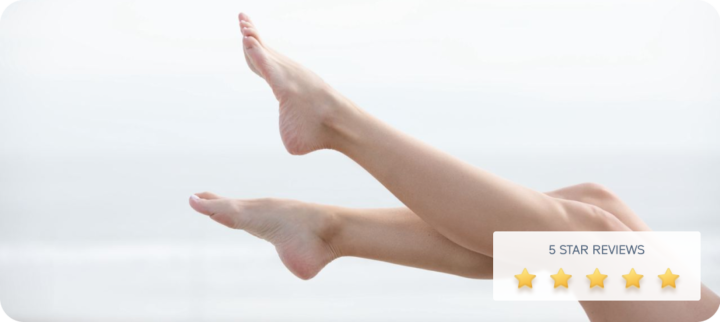Symptoms of Varicose Veins in Legs – Jacksonville Guide
If your legs often feel heavy, achy, or swollen, and you’re noticing twisted, bulging veins just beneath the surface of your skin, you may be experiencing varicose veins. These enlarged veins are not only a cosmetic concern — they can also lead to discomfort and, in some cases, more serious health problems.
At Well&You, we specialize in identifying and treating the symptoms of varicose veins in legs in Jacksonville and throughout North Florida. Here’s what you need to know about the causes, symptoms, diagnosis, and treatment options available near you.
Symptoms
Varicose veins most commonly affect the legs and feet. While for some people they may be primarily a cosmetic concern, others may experience discomfort or complications. Symptoms of varicose veins in legs can include:
-
Twisted, enlarged veins: Often blue or purple, these veins are visible just under the skin and may bulge outward.
-
Aching, throbbing, or cramping: Especially noticeable after long periods of standing or sitting.
-
Swelling in the lower legs and ankles: Caused by blood pooling in the veins.
-
Heaviness or fatigue in the legs: This sensation may worsen throughout the day.
-
Itching around the veins: Often mistaken for dry skin, this can be an early indicator.
-
Skin changes: Including discoloration, dryness, or irritation near the affected veins.
-
Restless legs syndrome: Some individuals with varicose veins also experience an urge to move their legs.
-
Superficial thrombophlebitis: Inflammation of veins just under the skin, sometimes accompanied by clots.
-
Leg ulcers: Painful sores that typically form around the ankles in more advanced cases.
When to See a Doctor
Varicose veins don’t always require medical treatment, but you should consider seeing a vein specialist in Jacksonville or the surrounding area if you experience:
-
Pain or aching that interferes with daily life
-
Persistent swelling in your legs or ankles
-
Skin discoloration or thickening
-
Bleeding from a vein
-
Signs of inflammation or a clot (such as redness or tenderness)
Prompt evaluation helps rule out underlying conditions and prevents complications.
Causes
Varicose veins develop when valves in the veins that regulate blood flow become weak or damaged. This causes blood to flow backward and pool in the vein, making it swell.
Contributing factors include:
-
Age: The risk increases as veins lose elasticity over time.
-
Sex: Women are more likely to develop varicose veins, particularly during pregnancy or menopause.
-
Pregnancy: Hormonal changes and increased blood volume can enlarge veins.
-
Family history: Genetics plays a role in vein health.
-
Obesity: Excess weight puts additional pressure on your veins.
-
Prolonged standing or sitting: Especially in jobs that require long hours on your feet.
-
Sun exposure: Can contribute to the development of spider veins, a related condition.
Diagnosis
A diagnosis usually begins with a physical exam. Your provider will examine your legs while you’re standing to assess visible signs and ask about your symptoms.
To better understand how your veins are functioning, an ultrasound may be performed. This imaging test uses sound waves to create a picture of your veins and check for any clots or improper valve function.
Treatment
Treatment depends on the severity of your condition and your symptoms. Options range from lifestyle changes to medical procedures.
Lifestyle and Self-Care
-
Exercise regularly to improve circulation.
-
Lose weight if needed to reduce pressure on your legs.
-
Elevate your legs to promote blood flow.
-
Avoid long periods of sitting or standing — take breaks to move.
-
Wear compression stockings, which gently squeeze your legs to encourage proper blood flow.
Medical Procedures
If lifestyle changes aren’t enough, your provider may recommend:
-
Sclerotherapy: A solution is injected into the vein to close it off. This is effective for smaller varicose veins and spider veins.
-
Laser treatment: A minimally invasive technique using laser energy to seal the vein.
-
Radiofrequency ablation: Uses heat from radiofrequency energy to close off affected veins.
-
Ambulatory phlebectomy: Small incisions are made to remove surface veins.
-
Vein stripping and ligation: A surgical procedure to remove or tie off a vein (now less common due to minimally invasive alternatives).
Prevention
While you can’t always prevent varicose veins, you can reduce your risk and manage existing symptoms:
-
Maintain a healthy weight.
-
Stay active — walking is especially beneficial.
-
Elevate your legs when resting.
-
Avoid crossing your legs when sitting.
-
Wear loose clothing and avoid high heels.
-
Use compression stockings if you’re at higher risk.
Care in Jacksonville, North Florida
At Well&You, our team understands the discomfort and self-consciousness that symptoms of varicose veins in legs can cause. If you’re in the Jacksonville or North Florida region and concerned about vein health, we’re here to help. Our experienced specialists offer personalized care, advanced diagnostic tools, and a full range of treatment options tailored to your lifestyle and needs.
Request an Appointment
If you’re ready to explore your options or need relief from varicose vein symptoms, don’t wait. Schedule a consultation today to begin your journey to healthier legs and better well-being.
